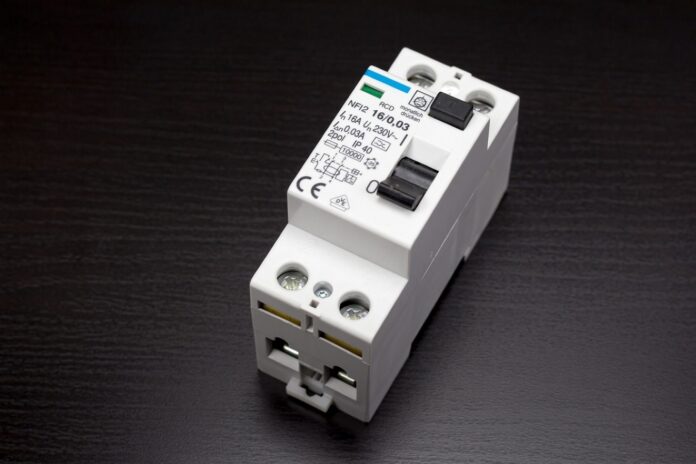Discover the answer to the question, “What is circuit breaker?” Circuit breakers are an essential component of any electrical system.
They are designed to protect your home or business from electrical fires and other hazards caused by overloading or short-circuiting.
However, despite their importance, many people don’t fully understand how circuit breakers work or how to properly maintain them.
This can lead to dangerous situations that could have been easily avoided.
In this post, I will explain circuit breakers and give you everything you need to know to keep your electrical system safe and functioning properly.
I will also cover the basics of how circuit breakers work, explain the different types of circuit breakers, and provide tips on how to maintain them.
At the end of this post, you’ll have a better understanding of how circuit breakers protect your home and how to keep them in good working order.
Importance Of Circuit Breaker In Electrical Systems
In the realm of electrical systems, circuit breakers play a crucial role in safeguarding both people and property.
These seemingly small devices are, in fact, essential components that help prevent electrical overloads, short circuits, and potential fires.
Understanding the basics of circuit breakers is vital for homeowners, electricians, and anyone who interacts with electrical systems on a regular basis.
At its core, a circuit breaker is a safety device designed to interrupt the flow of electricity when it exceeds safe levels.
It serves as a protective barrier, shielding electrical circuits from the damaging effects of excessive currents.
By swiftly cutting off the power supply when a fault occurs, circuit breakers act as the first line of defense against electrical hazards.
The importance of circuit breakers lies in their ability to prevent catastrophic consequences.
Without them, electrical systems would be prone to overheating, which can lead to electrical fires, equipment damage, and even severe injuries or loss of life.
Circuit breakers act as guardians, constantly monitoring the electrical current flowing through a circuit and instantly tripping when an abnormality is detected.
In residential settings, circuit breakers are typically found in the main electrical panel or distribution board.
These panels divide the electrical supply into various circuits, each protected by its own circuit breaker.
This organization allows for easy identification and isolation of faulty circuits without disrupting the entire electrical system.
In commercial and industrial applications, circuit breakers are designed to handle higher current ratings and protect more complex electrical systems.
They come in various types, including thermal-magnetic, magnetic, and residual current devices (RCDs), each tailored to specific demands and potential hazards.
As we proceed on this topic of circuit breakers, we will explore the different types, their working principles, installation procedures, maintenance requirements, and much more.
How do circuit breakers work?
Understanding how they work is essential for homeowners and professionals alike.
At its core, a circuit breaker is a device designed to interrupt the flow of electricity when a fault or overload occurs in an electrical circuit.
It acts as a switch that automatically trips or opens the circuit to prevent excessive current from flowing through it.
The basic mechanism of a circuit breaker involves a bimetallic strip or an electromagnet.
When the current passing through the circuit exceeds the rated limit, the heat generated causes the bimetallic strip to bend or the electromagnet to generate a magnetic field.
This leads to the tripping mechanism being triggered, which opens the circuit and stops the flow of electricity.
Furthermore, modern circuit breakers often incorporate advanced technologies such as electronic trip units and digital displays.
These enhancements provide additional protection and allow for better monitoring and control of electrical systems.
It’s important to note that circuit breakers are designed to be resettable, unlike fuses which need to be replaced after they have blown.
Once the fault or overload is resolved, the circuit breaker can be manually reset to restore power to the circuit.
In summary, circuit breakers serve as crucial safety devices that constantly monitor the flow of electricity and protect against potential electrical hazards.
Different types of circuit breakers and their applications
Understanding the different types of circuit breakers and their applications can help you make informed choices when it comes to electrical installations and maintenance.
Now, let us look into the different type of circuit breakers in the market
1. Standard Circuit Breakers:
These are the most commonly used circuit breakers and are designed to handle typical household electrical loads.
They come in various current ratings, such as 15A, 20A, or 30A, and are suitable for protecting lighting circuits, outlets, and small appliances.
2. GFCI Circuit Breakers:
Ground Fault Circuit Interrupters (GFCIs) are specifically designed to protect against electrical shock.
They monitor the flow of current and quickly shut off power when a ground fault is detected.
GFCIs are typically required in areas where water is present, such as bathrooms, kitchens, and outdoor outlets.
3. AFCI Circuit Breakers:
Arc Fault Circuit Interrupters (AFCIs) are designed to detect and prevent electrical arcs, which can cause fires.
They provide an extra level of safety by monitoring the circuit for abnormal arcing conditions and shutting off power if necessary.
AFCIs are commonly used in bedrooms, living rooms, and other areas where electrical fires could pose a risk.
4. Combination AFCI/GFCI Circuit Breakers:
These circuit breakers combine the functionalities of AFCIs and GFCIs, providing protection against both arc faults and ground faults.
They are recommended for circuits that require both types of protection, such as bedrooms and outdoor outlets.
5. Miniature Circuit Breakers (MCBs):
MCBs are commonly used in residential and commercial electrical installations.
They are compact in size and provide protection against overcurrents and short circuits.
CBs are available in different current ratings and trip curves, allowing for customization based on specific load requirements.
6. Molded Case Circuit Breakers (MCCBs):
MCCBs are larger circuit breakers used in industrial and commercial settings.
They offer higher current ratings and are capable of handling heavy loads. MCCBs are durable and designed to protect against overloads, short circuits, and ground faults.
Circuit Breaker Ratings And Specifications To Consider
Ratings and specifications are very essential when it comes to circuit breakers.
These factors determine the breaker’s capabilities and compatibility with your electrical system. Let’s dive into some key considerations.
Amperage Rating
Firstly, the amperage rating is a crucial specification to evaluate. It denotes the maximum current the breaker can handle before tripping.
It is vital to select a breaker with an amperage rating that matches the electrical load it will be protecting.
Choosing a breaker with a lower rating can lead to frequent tripping, while one with a higher rating may jeopardize the safety of your electrical system.
Voltage Rating
Another important factor is voltage rating. This indicates the maximum voltage the breaker can handle safely.
It is essential to ensure the breaker’s voltage rating aligns with the voltage of your electrical system.
Using a breaker with a lower voltage rating can result in damage and potential hazards.
Interrupting Rating Or Short-Circuit Current Rating (SCCR)
Additionally, interrupting rating or short-circuit current rating (SCCR) is a critical consideration.
This rating specifies the maximum fault current the breaker can safely interrupt without causing damage.
It is imperative to assess the potential short-circuit currents in your electrical system and choose a breaker with a sufficient SCCR to handle them effectively.
Type Of Circuit Breaker Is Essential
Furthermore, understanding the type of circuit breaker is essential. Common types include thermal-magnetic, electronic, and residual current devices (RCDs).
Each type has its unique features and applications. Evaluating your specific needs and consulting with a professional can help you determine the most suitable type for your electrical system.
Causes Of Circuit Breaker Tripping And How To Troubleshoot
Circuit breaker tripping can be frustrating and inconvenient, but understanding the common causes and troubleshooting methods can help demystify this issue.
There are several factors that can lead to a circuit breaker tripping. Being aware of these can aid in identifying the root cause and resolving the problem.
Electrical Overload
One common cause of circuit breaker tripping is electrical overload. This occurs when there is an excessive demand for electricity on a particular circuit.
It can happen if you have too many appliances or devices plugged into a single outlet or if there is a faulty electrical component.
To troubleshoot an overload, start by unplugging some devices or appliances and redistributing the load across different circuits.
If the issue persists, it may be necessary to consult an electrician to assess the electrical system and potentially upgrade the circuit.
Short Circuit
Another possible cause of circuit breaker tripping is a short circuit.
This occurs when there is a direct connection between the hot wire and the neutral or ground wire, resulting in a sudden surge of electricity.
Short circuits can be caused by damaged wires, faulty switches or outlets, or even pests chewing on the wires.
To troubleshoot a short circuit, start by inspecting the electrical outlets and switches for any signs of damage or exposed wires.
If you notice any issues, it is important to turn off the power to the circuit and seek professional assistance to repair or replace the damaged components.
Ground Faults
Ground faults are another common cause of circuit breaker tripping. These occur when there is an unintentional connection between the hot wire and the ground wire.
Ground faults can be caused by faulty appliances, damaged wiring, or moisture entering the electrical system.
To troubleshoot a ground fault, it is crucial to identify the specific circuit that is tripping and then inspect the outlets, appliances, and wiring associated with that circuit.
If you suspect a ground fault, it is recommended to consult an electrician for further evaluation and repair.
Circuit Breaker Safety Tips For Homeowners And Electricians
Whether you are a homeowner or an electrician, understanding circuit breaker safety is crucial for the well-being of your electrical system and the people using it.
Here are some essential tips to keep in mind when dealing with circuit breakers:
1. Familiarize Yourself with the Panel:
As a homeowner, take the time to locate your electrical panel and understand how it works.
Know which circuit breakers control specific areas of your home, such as the kitchen, bathroom, or outdoor outlets.
For electricians, being well-versed in different panel configurations and breaker types is essential.
2. Shut Off Power Before Maintenance:
Before performing any electrical work, always switch off the main power supply.
This will prevent electric shocks and potential damage to the electrical system.
For homeowners, this means turning off the main breaker in the panel.
Electricians should take additional precautions and use lockout or tagout procedures when working on live circuits.
3. Watch for Overloaded Circuits:
Overloading circuits can lead to overheating and potential fire hazards.
Avoid plugging too many high-powered appliances into the same circuit.
Spread out the load across different circuits or consider installing additional circuits if needed.
4. Test and Reset Tripped Breakers:
If a circuit breaker trips and shuts off power to a specific area, it is usually an indication of an electrical fault or overload.
To reset a tripped breaker, switch it to the off position first and then back to the on position.
If the breaker keeps tripping, consult a qualified electrician to identify and resolve the underlying issue.
5. Regularly Inspect Breakers for Signs of Damage:
Homeowners should periodically inspect their circuit breakers for any signs of damage, such as burnt marks, loose connections, or corrosion.
If you notice any issues, contact a professional electrician to assess and repair the problem to ensure the safety of your electrical system.
6. Never Oversize a Breaker:
Electricians should be cautious about installing breakers with higher amp ratings than what the circuit is designed for.
Oversized breakers can pose a significant risk as they may not trip in the event of an overload or short circuit, leading to potential overheating and electrical hazards.
Final thoughts on What is circuit breakers in electrical systems.
In conclusion, circuit breakers play a vital role in ensuring the safety and efficiency of electrical systems.
They are the unsung heroes that protect our homes, businesses, and industries from potential electrical hazards.
By effectively detecting faults and interrupting the flow of electrical current, circuit breakers mitigate the risks of electrical fires, damages to equipment, and even life-threatening situations.
The significance of circuit breakers cannot be overstated.
They act as the first line of defense, constantly monitoring the electrical flow and instantly responding to abnormalities.
Without circuit breakers, the consequences of a short circuit or overload could be catastrophic.
Moreover, circuit breakers offer the convenience of easy resetting after tripping, eliminating the need for costly replacements.
This not only saves time and money but also ensures that electrical systems can quickly resume normal operations.
It is crucial to understand the different types of circuit breakers available and their specific applications.
From residential installations to industrial settings, choosing the right circuit breaker for the intended purpose is essential.
Consulting with a qualified electrician or electrical engineer can provide valuable insights and guidance in this regard.




